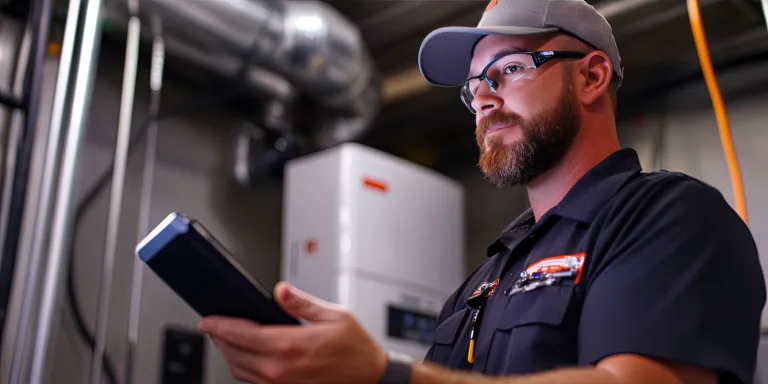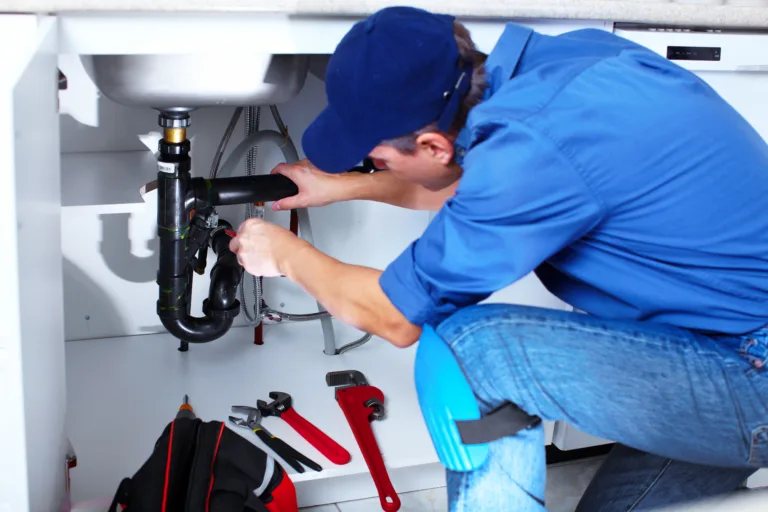Benefits of Installing a Bidet Toilet
Bidet toilets have been popular in many parts of the world for years, but have only recently started to gain popularity in North America. A bidet toilet is a toilet that has a bidet attachment installed, which allows for the cleaning of the user’s private parts with water. This may seem like a luxury or unnecessary addition to a bathroom, but there are many benefits to installing a bidet toilet. Take a look at the top 5 reasons you should consider installing a Bidet when upgrading your residential bathroom and contact Hansen Family Plumbing & Air if you are located in Mesa, AZ or the surrounding regions for bidet installation services!

Improved Hygiene
One of the main benefits of a bidet toilet is improved hygiene. The use of water to clean oneself after using the toilet is more effective at removing bacteria and germs than the use of toilet paper alone. This can help prevent the spread of diseases and infections, and also reduce the risk of skin irritation and hemorrhoids.
Bidet toilets, also known as washlets, have been popular in many countries for years, but they are gaining popularity in other parts of the world due to their many benefits. One of the primary advantages of a bidet toilet is improved hygiene.
Using a bidet toilet allows for the use of water to clean oneself after using the toilet, which is more effective at removing bacteria and germs than the use of toilet paper alone. Toilet paper can leave behind tiny particles of fecal matter, which can harbor bacteria and cause unpleasant odors. On the other hand, water can help to flush away bacteria and germs, leaving the user feeling clean and refreshed.
In addition to improving hygiene, using a bidet toilet can also reduce the risk of skin irritation and hemorrhoids. Toilet paper can be abrasive and irritating to sensitive skin, and repeated wiping can cause inflammation and discomfort. Using water to clean oneself is gentler and less likely to cause irritation, which can help to prevent skin conditions like hemorrhoids.
Moreover, bidet toilets are eco-friendly since they reduce the amount of toilet paper needed, which ultimately saves trees and reduces the amount of waste that goes into landfills. This is especially important given the rising environmental concerns and the need to adopt sustainable practices.
Increased Comfort
One of the primary benefits of a bidet toilet is increased comfort for users. Using water to clean oneself is gentler and less abrasive than using toilet paper. Bidet toilets provide a gentle and efficient way to clean oneself, reducing the need for repeated wiping with toilet paper, which can be harsh on the skin and cause irritation. The use of water can leave the user feeling cleaner, fresher, and more comfortable.
Moreover, bidet toilets can be adjusted to provide a comfortable water temperature, pressure, and angle, which can make using the toilet a more pleasant experience. Most bidet toilets come with a variety of settings that can be customized according to the user’s preferences, ensuring optimal comfort.
The water temperature can be adjusted to provide warm water, which is especially beneficial during cold weather or for people with sensitive skin. The pressure and angle of the water can also be adjusted to provide a more thorough and comfortable cleaning experience, ensuring that the user feels clean and comfortable after each use.
In addition to increasing comfort, bidet toilets can also be beneficial for people with mobility issues, as they reduce the need for reaching and twisting, which can be difficult for some individuals. Bidet toilets can also be helpful for pregnant women, the elderly, and people with certain medical conditions that make traditional toileting methods uncomfortable.
Environmentally Friendly
Bidet toilets are known for their environmentally friendly features and sustainability benefits. The use of water to clean oneself after using the toilet is more sustainable than the use of toilet paper, which requires the harvesting of trees, energy to produce, and transportation. The production of toilet paper also consumes a significant amount of water and contributes to deforestation, which can negatively impact the environment.
In contrast, bidet toilets do not require the use of toilet paper, which can significantly reduce the amount of paper waste generated in households and public restrooms. By using a bidet toilet, individuals can reduce their environmental impact and contribute to a more sustainable future.
Bidet toilets can also reduce the amount of water used in the bathroom. Traditional toilets use a lot of water, and each flush can waste several gallons of water. In contrast, bidet toilets use a minimal amount of water for cleaning, typically around 0.5 to 1.0 liters of water per use. This can lead to significant water savings over time and reduce the overall environmental impact of the household or establishment.
Additionally, bidet toilets are often equipped with energy-saving features such as automatic shut-off and low-energy modes. These features help to minimize energy consumption, which further contributes to their eco-friendliness.
Saves Money
Bidet toilets can offer users a significant amount of cost savings over time. While the initial cost of a bidet toilet may be higher than a traditional toilet, the savings in toilet paper can add up over time. Bidet toilets can eliminate the need for toilet paper, which can be expensive over time, especially for larger households or establishments. In contrast, bidet toilets only require a minimal amount of water for cleaning, which can lead to significant cost savings in the long run.
Moreover, bidet toilets can also reduce the need for expensive wipes or creams. Traditional toilet paper can be harsh on the skin, and repeated wiping can lead to skin irritation, discomfort, and even hemorrhoids. Bidet toilets use water to clean, which is gentler and less likely to cause skin irritation. As a result, users may not need to purchase expensive wipes or creams to soothe skin irritation, which can save money over time.
In addition to these savings, bidet toilets can also contribute to reducing plumbing and septic issues. Traditional toilets can cause clogging and require costly repairs. In contrast, bidet toilets are less likely to cause plumbing issues, as they use water to clean, which is less likely to cause blockages and backups.
Improved Accessibility
Bidet toilets can be especially beneficial for people with mobility issues or disabilities, as they offer several features that improve accessibility and comfort.
The use of water to clean oneself after using the toilet can be easier and more comfortable than the use of toilet paper, which can be challenging for people with mobility issues. Bidet toilets allow users to clean themselves without the need for reaching and twisting, which can be difficult or painful for some individuals. This can reduce the risk of falls or injuries, which can be particularly important for elderly or disabled individuals.
Moreover, bidet toilets can be equipped with additional features that improve accessibility and comfort. For example, some bidet toilets have heated seats, which can be particularly helpful for people with arthritis or other conditions that cause joint pain. Heated seats can provide warmth and comfort, making the bathroom experience more pleasant and relaxing.
Bidet toilets can also be equipped with handrails or grab bars, which can make using the bathroom safer and more accessible. These features can provide additional support and stability for people with mobility issues, reducing the risk of falls or accidents. This can be particularly important for older adults or people with disabilities, who may be more prone to injuries.
Overall, bidet toilets offer several accessibility features that can improve the bathroom experience for people with mobility issues or disabilities. The use of water to clean oneself is easier and more comfortable than using toilet paper, and additional features like heated seats and handrails can provide additional support and safety.
Bidet VS Standard Toilet
The main difference between a bidet toilet and a regular toilet is that a bidet toilet has a bidet attachment installed, which allows for the cleaning of the user’s private parts with water, whereas a regular toilet does not.
A regular toilet typically uses toilet paper to clean oneself after using the toilet. This can be a less effective method of cleaning, as toilet paper may not remove all bacteria and germs, and can be rough and abrasive, leading to skin irritation and discomfort.
In contrast, a bidet toilet uses water to clean oneself after using the toilet. This can be a more effective and gentle method of cleaning, as water can help remove bacteria and germs, and is less likely to cause skin irritation and discomfort. Additionally, bidet toilets can be adjusted to provide a comfortable water temperature, pressure, and angle, which can make using the toilet a more pleasant experience.
Another difference between a bidet toilet and a regular toilet is that bidet toilets are typically more expensive than regular toilets, due to the additional cost of the bidet attachment and installation. However, bidet toilets can offer long-term savings in terms of reduced toilet paper usage and the prevention of skin irritation or infections, which may require costly medical treatments.
Bidet Installation Process
The installation process for a bidet toilet can vary depending on the specific model and type of bidet attachment being installed. However, here is a general overview of the steps your local plumber will likely take when installing a bidet toilet:
- Turn off the water supply: Before installing a bidet toilet, it is important to turn off the water supply to the existing toilet. This can usually be done by turning the shut-off valve located near the toilet.
- Remove the existing toilet seat: The existing toilet seat needs to be removed to make way for the bidet attachment. This can usually be done by loosening the bolts that hold the seat in place and then lifting the seat off the toilet.
- Install the bidet attachment: The bidet attachment can then be installed onto the toilet bowl. This typically involves attaching the mounting bracket to the toilet bowl and then connecting the water supply hose to the attachment.
- Install the bidet control panel: If the bidet attachment has a control panel, this will need to be installed next. This typically involves mounting the control panel onto the side of the toilet and then connecting it to the bidet attachment.
- Connect the water supply: Once the bidet attachment and control panel are installed, the water supply can be connected to the bidet attachment. This may involve connecting a T-adapter to the shut-off valve and then connecting the bidet attachment hose to the T-adapter.
- Test the bidet toilet: Once everything is connected, it is important to test the bidet toilet to ensure that it is working properly. This can involve turning the water supply back on and then using the bidet attachment to clean oneself.
It is important to note that installation of a bidet toilet may require the help of a professional plumber, especially if there are any complicated plumbing or electrical requirements. It is also important to carefully follow the manufacturer’s instructions and safety guidelines when installing a bidet toilet. Hiring a professional, licensed plumber is always the most ideal for installing a bidet. Hansen Family Plumbing & Air guarantees the work we provide when installing your new smart toilet! Call today for a free estimate!


